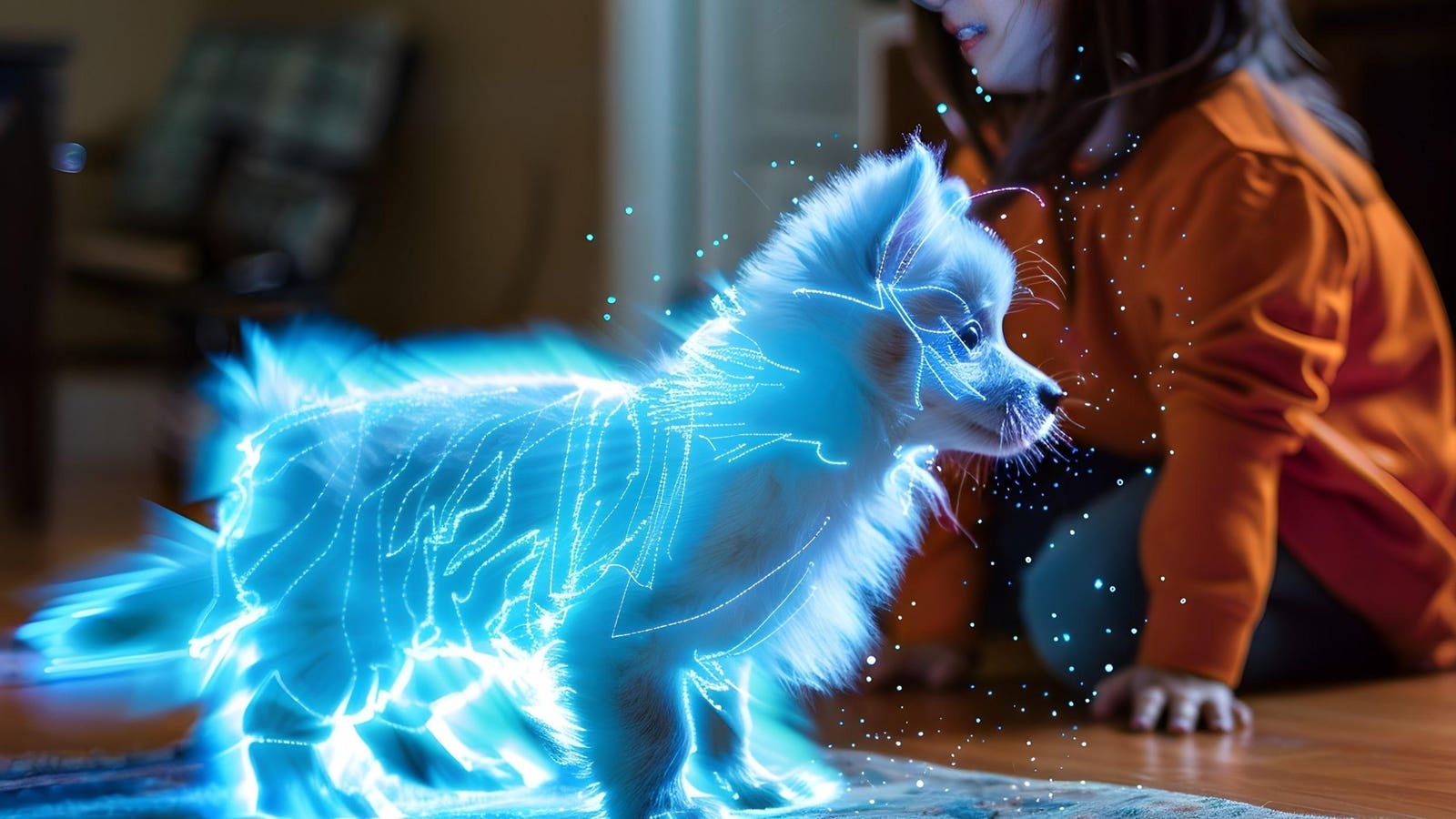Artificial intelligence-powered virtual pets are taking the world by storm, with apps like Pawn … [+]
Remember Tamagotchis? Those little digital pets that had millions of kids frantically pressing buttons to keep their virtual friends alive in the 1990s? Well, they’ve evolved into something much more sophisticated: AI-enabled virtual pets that can talk, learn and form real bonds with their human caretakers.
Why virtual pets are making a comeback
In an age where technology is often blamed for increasing isolation, companies like Slay are taking a different approach. Their viral hit app Pengu has become the largest AI character app in the US, but with a twist – you can’t raise your virtual pet alone. It requires two people to care for each Pledge together, creating a social experience that bridges digital and human connections.
“If you think about how many people in the US have pets in real life, you’ll see that there is a huge demand,” explains Fabian Kamberi, CEO and co-founder of Slay. “I think we’ve been the first company to be able to get users to engage with an AI character at scale, which hasn’t been done before.”
The power of AI in creating digital life
What sets modern virtual pets apart from their predecessors is the sophisticated AI technology behind them. Using large language patterns, these digital companions develop unique personalities and can engage in meaningful conversations. “We were using the LLM at scale to give the Pledge personality and character traits,” says Kamberi. The app offers several ways for users to interact with their virtual pet. Through a digital diary feature, users can follow the Pawn’s daily adventures and experiences, creating a sense that their pet has its own ongoing life. Users can also engage directly with their pet through text chats and voice interactions, making the relationship feel more personal and natural.
The technology also enables virtual pets to remember past interactions and preserve context over time. For example, they can recall previous conversations, remember important events and even help with homework. AI adapts to create a personalized experience for each user while maintaining appropriate security boundaries and measures.
Building safe and meaningful connections
One of the biggest challenges in creating AI companions is making sure they foster healthy relationships. Slay has addressed this by making their virtual pets social experiences.
“When you give love to Pengu, it means that you are thinking about your friend and we are building something together,” explains Kamberi. “The gamified mechanic is that you definitely progress together, and achieve things and play games.”
The company has also implemented strict safeguards to prevent inappropriate interactions and ensure the experience remains positive, especially for younger users. This includes pre-filtering content and creating an environment where the virtual pet feels more like a family member than a chatbot.
The Future of the Digital Society
Looking ahead, Kamberi envisions a world where virtual friends become commonplace. “I see that everyone will have virtual friends at some point. Virtual characters that we can engage with in very different ways. So let’s say I have a character that I raise with my girlfriend and I have a character that I raise with my mother.”
This future isn’t just about creating digital alternatives to real pets—it’s about enhancing human connections through shared digital experiences. The technology continues to evolve, with companies like Slay exploring 3D experiences and new ways to make virtual characters feel more alive and engaging.
A new chapter in human-AI interaction
As AI technology becomes more sophisticated and accessible, virtual pets like the Pawn are just the beginning. They represent a new paradigm in how we interact with AI—not as a replacement for human connections, but as a bridge that brings people together through shared experiences and emotional connections. However, we have to ask ourselves: in a world already dominated by screens and digital interactions, do we really need another layer of technology mediating our relationships?
This vision of the future raises important questions about the nature of human connection. While AI-enabled virtual pets can help create meaningful connections in our increasingly digital world, they can also further normalize the replacement of real-world interactions with digital alternatives. As these technologies continue to advance, we will need to carefully balance the benefits of AI companionship with the basic human need for authentic, unmediated relationships. The success of apps like Pengu suggests that many people are ready to embrace digital pets – but the long-term implications for human social development and emotional well-being remain to be seen.
